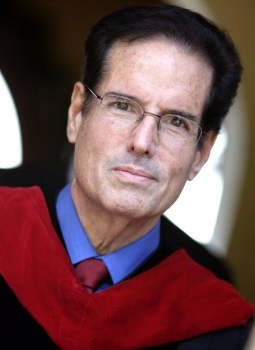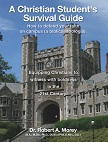Women Elders in the Early Church
By Dr. Robert A. Morey. Ph.D., D.Min., D.D.
It is regrettable that the modern controversy over women holding church offices is structured in such a way that women are faced with two extreme positions. Either they are refused any office or position in the church or they are made the “Pastor.” Neither position does justice to all the Scripture passages involved and both ignore the dynamic solution which the Apostolic Church developed to answer this problem.
The Apostolic Church was very creative in its approach to church offices. As different needs arose, they would set up an appropriate office or position in the church to handle the problem. For example, in Acts 6:1–6 the office or position of Deacon was created to deal with the Church’s charitable work among the poor. By the time of the Epistles, this position had become a permanent part of church government (Phil. 1:1) and the responsibilities and qualifications were set forth (1 Tim. 3:8–13).
The Early Church was thus dynamic and not static in its approach to church offices. This dynamic quality has been expressed today in the 21st Century church where such positions as “Senior Pastor,” “Minister of Education,” “Assistant Pastor,” “Youth Pastor,” “Minister of Music,” “Treasurer,” “Board Member,” etc. have been created to fulfill various cultural needs.
Although there are no biblical mandates for such offices mentioned above, the biblical principle of setting up new offices to meet new needs (Acts 6), means that no explicit biblical warrant is needed in such situations.
Some misguided Christians have misunderstood the doctrine of sola scriptura to mean that unless you have a clear verse in the Bible to justify whatever is done in the church, you cannot have it. Thus they condemn having musical instruments, ministers of music, bus captains, youth pastors, etc.
These misguided brothers and sisters fail to understand that sola scripture forbids making anything essential to worship that is not clearly stated in Scripture. The setting up of such ministries like “women’s ministries” are not essential to worship but circumstantial like pews and air conditioning. See my book, Worship Is Not Just for Sunday, for the biblical and historical basis of this understanding of the regulative principle of worship.
The Church’s dynamic approach to positions of honor and ministry enabled it to transcend all cultural boundaries. While being careful to maintain such supra-cultural permanent offices as Elder and Deacon, the Church can set up culturally conditioned positions as a valid way to relate to every culture and civilization.
The Early Church recognized many different offices which no longer exist in modern churches. The Didache, one of the earliest Christian writings, refers to such offices as apostle and prophet (11:3–13:7) as well as bishops (elders) and deacons (15:1–2). Later, other offices such as exorcist, precentor, catechist, etc. were developed as required (see Schaff, History of the Christian Church, Vol. II, p. 131f).
While the Bible does mention the offices of Apostle, Prophet and Evangelist (Eph. 4:11) and possibly a host of other offices (1 Cor. 12:28–29), since no provision was made in Scripture for their permanence by the setting forth of the requirements and responsibilities of such offices, they gradually died out (see Schaff, ibid., I, pp. 484–491).
This is not to say that as the need arises, such offices cannot be revived from time to time. Calvin felt that Luther was an “Apostle” in this sense (Institutes of the Christian Religion, IV, III, 4).
Although most churches no longer officially recognize “Apostles,” “Prophets” and “Evangelists,” they are still given to the Church today in its “gifted” theologians, apologists, evangelists, missionaries and church planters, Bible teachers, etc. (Schaff, Vol. I, p. 489).
Among the offices of the Early Church was that of “widow” or “woman elder.” Several things need to be spelled out about this office.
First, this office or position is described in I Timothy 5:9–13 in terms of the congregation electing qualified widows to a position of honor and ministry. These special widows were “put on the roll” or elected to a position and were later ordained to it by the laying on of hands (Alford, The Greek Testament, III, p. 347).
The requirements for joining this order of special widows were of a spiritual nature and paralleled those for male elders (1 Tim. 3:1–7). That Paul is not speaking of widows in general but a special group within such a class can hardly be doubted because the church never demanded such spiritual qualifications from the merely poor and destitute before giving them aid.
Ellicott comments:
“The instructions in this passage are so definite, so precise, that it is impossible not to assume in the days of Timothy and of Paul, in some, if not in all the great churches, the existence of an official band of workers, consisting of widows, most carefully selected from the congregation …(they) were a distinct order.” Ellicott’s Commentary, Vol. VIII, p. 202
This special order of women clearly existed as part of the Apostolic Church, and even the heathen made reference to them (J.B. Lightfoot, Apostolic Fathers, II, 2, p. 322). That 1 Timothy 5:9–13 is describing this order is the virtually universal opinion of commentators both old and new: Alford, Balsamon, Chrysostom, Conybere and Howson, De Wette, Ellicott, Fritzsch, Grotius, Lock, Lightfoot, Michaels, Mosheim, Meyer, A.T. Robertson, Sadler, Scott, Vincent, Weisinger, Zonarrs, etc.
This order of widows in the Early Church paralleled the “Mothers of the Synagogue” who occupied such a place in intertestamental Judaism (see Holtzman, Pastoral Briefe., p. 241).
When we turn to the lexicographical evidence under the word “widow” we find that Lampe, Moulton and Milligan, Bauer, Arndt and Gingrich, etc. all refer to a special order of widows who occupied a special position in the Early Church.
Second, these women should not be viewed as deaconesses or even “head Deaconesses.” This would be “quite a mistake” according to Lightfoot (Apostolic Fathers, II, 2, p. 322) and would not fit the facts of the text of Scripture or church history according to Dean Alford (III, p. 347).
Paul has already given the qualification for deaconesses in 1 Timothy 3:11. The qualifications for “widow” in 1 Timothy 5:9–13 are more closely paralleled to those required of male elder (3:1–7). The “widows” and deaconesses are always spoken of as two distinct bodies in Scripture and church history. The “widows” sat in the second row behind the male elders, who sat on the first row, while the deacons and deaconesses sat behind the widows (Alford, III, p. 347).
Third, these women functioned in a truly presbyterial capacity. They had charge not only of the other widows but of all the women in the church. They were not “exercising authority over men” (1 Tim. 2:12). They were discipling the women (Tit. 2:4).
In Titus 2:3–5, Paul tells Titus to teach the presbutidas (i.e., women elders) to teach the younger women. That he was not simply saying that old age was all that was necessary is clear from the fact that these women teachers had to meet spiritual qualification (v. 3). The subjects in which they were to instruct the other women required spiritual maturity (vs. 4–5). Thus while these women were “older” in age, it is their being spiritually mature that is in view.
This is why Paul says that these women must be hieroprespestata (v. 3). This word means according to Vincent,
“… becoming those who are engaged in sacred service. The meaning is the more striking if, as there is reason to believe, the presbutidas represented a quasi-official position in the church” (Word Studies in the New Testament, IV, p. 341).
As Moulton and Milligan point out:
“It is sometimes thought that the presbutidas of Titus 2:3 … are the members of a priestly or organized class in view of the hierprepes which follows” (p. 533).
Given the distinction between the sexes in the first century, that there arose a need for women elders to counsel and instruct the women in the congregation is no surprise. While Paul tells Titus to teach by verbal instruction (Greek: lalew), the women elders are to disciple the younger women personally. It would not have been appropriate for Titus to do so.
The women elders were under the authority of the male elders who had oversight over the entire congregation. Just as the deaconic came to include women who could minister to the women in those physical areas where the male deacons could not, the presbytery or eldership came to include women who could minister to other women in spiritual and domestic areas where the male elders could not.
These women elders instructed new female converts and even baptized them (see Lange’s Commentary, Vol. II, p. 59 on 1 Tim. 5:9).
The following comments from various scholars are given to establish the fact that the existence of women elders in the Early Church has been noted for many years and is not something recently “invented” by feminist scholars.
We then conclude that these “widows” were a distinct and most honorable order, whose duties, presbyteral rather than deaconic, apparently consisted in the exercise of superintendence over and in the ministry of counsel and consolation to, the younger women (Ellicott’s Commentary, VIII, p. 203)
Such widows, called presbyteresses, seem to have the same relation toward their sex as the presbyters toward the men (Lange’s Commentary, Vol. II, p. 58).
They supervised the female members in much the same way as the elders were responsible for the men (Scott, The Pastoral Epistles, p. 57).
They corresponded in office for their own sex in some measure to the presbyters, sat unveiled in the assemblies in a separate place, by the Presbyters and had a kind of supervision over their own sex (Alford, The Greek Testament, Vol. III, p. 347).“An order of widows is referred to whose duties apparently consisted in the exercise of superintendence over … the younger women, whose office in fact was, so to say, presbyteral rather than deaconic. The external evidence for the existence … of such a body, even in earliest times, is so fully satisfactory and so completely in harmony with the internal evidence supplied by 1 Tim. 5:10, e.g., that on the whole we should adopt this view. That the widows here were church officials, who to command respect, must have been foremost in the performance of the duties for which women are looked up to.” (Sadler, Colossians, Thessalonians and Timothy, p. 236–237)
Fourth, the documents of the Early Church clearly speak of an order of women elders or disciplers who had a ministry in the church and even a special seat of honor in the congregation.
“The Fathers … to the fourth (century), recognized a class known as presbyteresses ‘aged women’ (Tit. 2:3), who had oversight of the female members and a separate seat in the congregation” (Vincent, Word Studies in the New Testament, Vol. IV, p. 257).
Stahlin in Theological Dictionary of the New Testament, Vol. IX, p. 464f, points out that it is clear that in the Early Church there existed an order of women who ministered on a spiritual level to the other women. It is impossible to reduce their ministry to that of the deaconic.
In Ignatius’ Letter to the Symrneans (XIII, 1), he mentions “the virgins who are called widows.” While Lightfoot’s contention that the order of widows was not primarily made up of unmarried virgins is well taken, yet, it is still clear that some unmarried women were allowed to join the order if they met the spiritual qualifications.
Just as it was no longer thought necessary for men to be married and to be the father of children to be qualified to be an elder, even so it developed that spiritually mature unmarried women could join the female presbytery.
When Polycarp wrote his Letter to the Philippians, he stated the qualifications for becoming a “widow,” i.e., woman elder (IV), as well as those for deacons, deaconesses (V) and male elders (VI). The context is clearly dealing with church offices.
Other references to this order have been found in Hermas Vis. II.4; Clem. Hom. XI. 30; Tert. de Pudis 13; Apost. Constitutions VI, 17, 4; Test. Domini. 1.23 and among the heathen, Lucian De Mort. Perezr. 12.
It was not until the Council of Laodicea (A.D. 344) that the order of women elders was officially abolished.
“The appointment of the so-called female elders of presidents shall not henceforth take place in the church” (literal translation of Canon II).
The Canon reveals that certain women were “elders” or “presidents” in the church up to that time. This is the same council that forbade the “laity” from observing the love feast (Canon 28) and in forbidding “lay” intrusions into “clergy” business. It was a council which did much to strengthen the grip of priestcraft on the church and to overturn the last elements of the priesthood of the believer which still survived from Apostolic times.
Fifth, perhaps a dynamic overview of the order’s evolution would be helpful at this point.
The Apostolic Church from the very beginning felt a strong responsibility to minister to the poor and destitute in society. Thus there was an emphasis on the care of destitute widows and orphans (Jas. 1:27).
As more of the widows who were receiving financial aid from the Church became Christians, it was probably felt that since they were receiving aid from the church, they should be assigned some work to do in the church.
Those women who were interested in helping with the distribution of aid became involved with the deacons. At first, they were “assistants” to the deacons. But, eventually, they were recognized as deaconesses and the care of destitute women and children was given to them while the male deacons took care of the destitute men and supervised the entire deaconic.
Other women were more spiritually qualified to help the male elders first as “assistants” and then as presbyteresses. The care of the women was given into their hands. They did all the “personal” counseling and discipling needed. Eventually their position became so honorable that spiritually mature younger or unmarried women desired to be involved in discipling other women as well.
When the deaconic was first set up, only seven men were chosen and the qualifications were quite brief (Acts 6:3). As time progressed, the requirements and scope of the deaconic developed beyond its original purpose (1 Tim. 3:8–13).
When the order of widows was first set up, there were age requirements. But as they developed from being “widows” to presbyteresses, such original requirements were dropped. A comparison of 1 Timothy 5:9–10 and Titus 2:3 results in a list of spiritual qualifications for this office and in Titus 2:4–5, the Apostle Paul gives a sevenfold curriculum of instruction.
For several centuries the office of woman elder was fulfilled without disturbing the male’s headship in the home and church. All believers were personally discipled and instructed.
It was only the rise of clergyism or priestcraft that led to the extinction of this most noble and biblical office.
Sixth, since we know that God intended for the offices of elder and deacon to continue in the church throughout all ages and cultures—because He placed in Scripture the qualifications and responsibilities of those offices—is it not also true that the office of woman elder is likewise provided for?
In 1 Timothy 5:9–19 and Titus 2:3–5, we find the qualifications and responsibilities for “widow” or “presbutidas.” Evidently, God intended that elderesses as well as deaconesses should continue in the church throughout the present age.
It is interesting to note that the “widows” in Colonial American Churches were organized as a special group to minister to the women in the churches and in the community. It was such a position of honor and ministry that many widows refused to remarry.
Conclusion
We have a biblical and apostolic solution to the present dilemma of female leadership in the church. It is a third way which avoids feminism and chauvinism at the same time. Given the doctrine of the sufficiency of Scripture, it only stands to reason that God would have made provision in Scripture for the discipling of Christian women.
If this biblical program would have been carried out in obedience for the last 1,900 years, we would not have the feminist issue today.






































